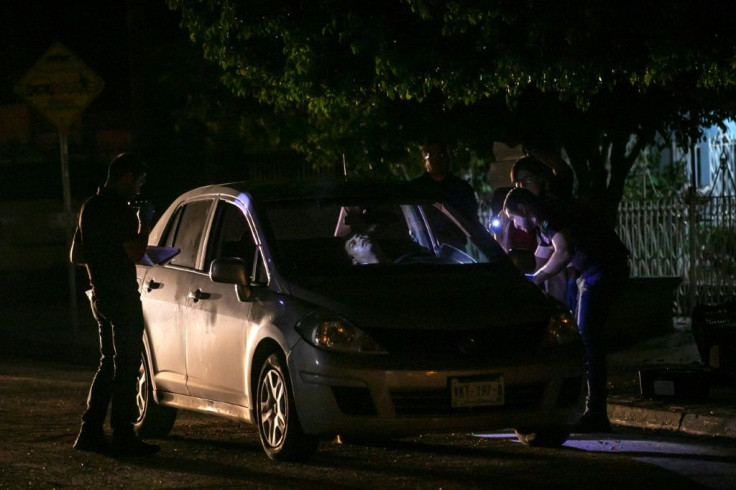24 Hours In The Shadow Of Mexico's Violence

As Mexico struggles to stop the bloodshed unleashed by its "drug wars," the violence casts a long shadow over ordinary life for many Mexicans.
On November 22, AFP deployed a team of photo and video journalists across the country to document the daily brutality for 24 hours.
These are their reflections on covering the deadly onslaught gripping the country, where more than 250,000 people have been murdered since the government deployed the army to fight drug cartels in 2006.

Everything in Ciudad Juarez is extreme: the arid climate of the Chihuahuan desert, the stark contrasts of the US-Mexican border, the violence.

It was once dubbed the "murder capital of the world," before other cities overtook it.
To photojournalist Herika Martinez, 36, it is home.

"My images tell the stories of mothers who have lost a daughter, victims of massacres, communities that have been deserted because of the violence," she says.
Death can come for anyone, anytime here -- in cartel turf wars or anti-narcotics operations. Sometimes innocent civilians are caught in the crossfire.

"Being a photojournalist in Ciudad Juarez means being in constant contact with death and suffering. It means living other people's pain, and then having it become your own, against a backdrop of tears, bullets, blood," she adds.
Raul Morales, 41, is a video journalist in the city.

The toughest part of the job, he says, is separating his work chronicling the violence from "my feelings as a father, brother, son or husband."

Pedro Pardo, 44, says he never really wanted to cover "la nota roja," or "red pages" -- the stories of daily violence that are a fixture of the Mexican press.

But working for nine years in the southern state of Guerrero, one of the most violent in Mexico, the "nota roja" came looking for him.
He has had to learn to live with the trauma of photographing mutilated remains, charred bodies and severed body parts.
"As photojournalists, we couldn't just ignore the violence. We had a responsibility to inform people," says Pardo, who is now based in Mexico City.

But he adds: "It pains me sometimes to look at my own pictures. I'm human."
On the northern border with the United States, in Tijuana -- a jumping-off point for migrants chasing the American dream, and a battleground for rival cartels -- Guillermo Arias, 43, found himself drawn to a mass grave turned memorial to Mexico's faceless victims.
He fixated on the inscriptions painted there: "Where are you?" "What happened here?" "Never again."
Ulises Ruiz, 42, is based in Mexico's second city, Guadalajara.
He says a Mexico without narco-violence is "a very distant idea."
"The authorities are overwhelmed. Every day there are murders, kidnappings, people tortured and their bodies dumped in public, mothers looking for their missing children, investigators searching in mass graves," he says.
"It's impossible to cover it all."
Rashide Frias, 35, lives in Culiacan, capital of the western state of Sinaloa -- jailed drug kingpin Joaquin "El Chapo" Guzman's bastion.
One of his pictures for this project, taken at night, shows a compact car illuminated by a glassy halo of light that reveals a dead man at the wheel, his pale face slumped back.
"I've borne witness with my camera to the way this phenomenon has penetrated to the heart of Mexican society," he says.
"You breathe death in Mexico, every moment and everywhere."
Francisco Robles, 38, who works in Acapulco -- a once-glamorous Pacific resort now scarred by violence -- says people have become numb.
"People aren't surprised anymore to see mutilated bodies. They can walk right by a crime scene without being startled, take their cell phones out and take a picture or a video, as if it were normal, as if it were just another tourist attraction," he says.
Julio Cesar Aguilar, 41, photographs the violence from the northern industrial city of Monterrey, where he moved 12 years ago.
The victim of four break-ins, he has moved twice since then.
"I sometimes feel like I'm normal at the start of the day, but as I take more and more photos, I am almost physically deformed. By nighttime, I feel like a monster," he says.
"And that's how it is, day after day."
© Copyright AFP {{Year}}. All rights reserved.





















